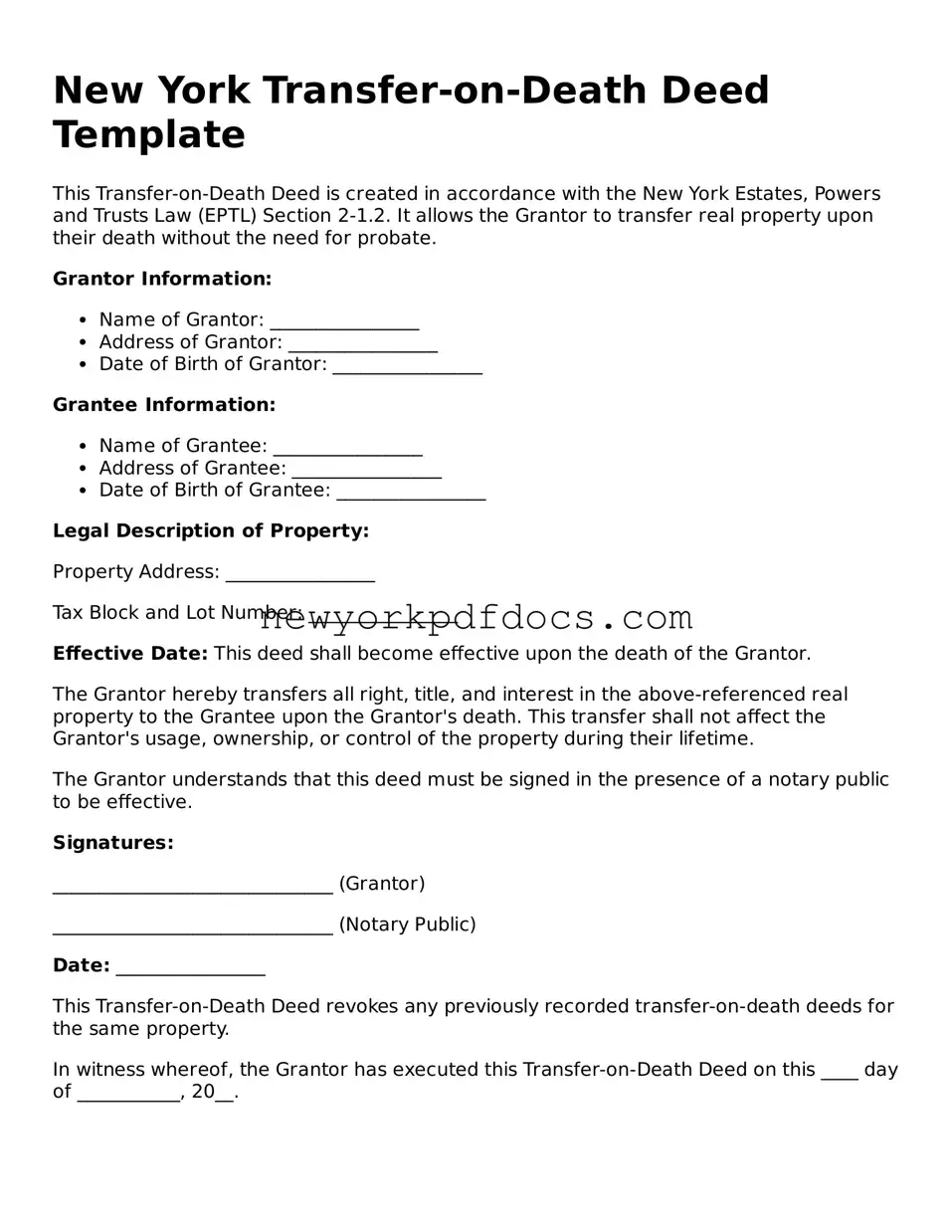New York Transfer-on-Death Deed Template
This Transfer-on-Death Deed is created in accordance with the New York Estates, Powers and Trusts Law (EPTL) Section 2-1.2. It allows the Grantor to transfer real property upon their death without the need for probate.
Grantor Information:
- Name of Grantor: ________________
- Address of Grantor: ________________
- Date of Birth of Grantor: ________________
Grantee Information:
- Name of Grantee: ________________
- Address of Grantee: ________________
- Date of Birth of Grantee: ________________
Legal Description of Property:
Property Address: ________________
Tax Block and Lot Number: ________________
Effective Date: This deed shall become effective upon the death of the Grantor.
The Grantor hereby transfers all right, title, and interest in the above-referenced real property to the Grantee upon the Grantor's death. This transfer shall not affect the Grantor's usage, ownership, or control of the property during their lifetime.
The Grantor understands that this deed must be signed in the presence of a notary public to be effective.
Signatures:
______________________________ (Grantor)
______________________________ (Notary Public)
Date: ________________
This Transfer-on-Death Deed revokes any previously recorded transfer-on-death deeds for the same property.
In witness whereof, the Grantor has executed this Transfer-on-Death Deed on this ____ day of ___________, 20__.
